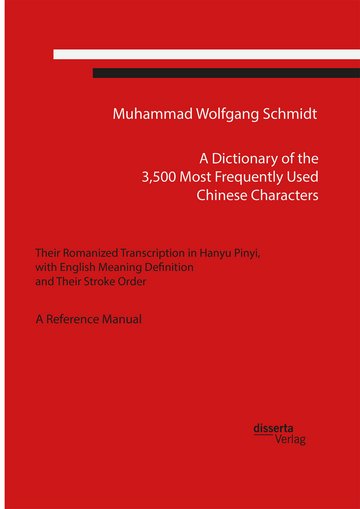A Dictionary of the 3,500 Most Frequently Used Chinese Characters: Their Romanized Transcription in Hanyu Pinyi,. with English Meaning Definition, and Their Stroke Order. A Reference Manual

| Autor | Muhammad Wolfgang G. A. Schmidt |
|---|---|
| Verlag | disserta Verlag |
| Erscheinungsjahr | 2016 |
| Seitenanzahl | 329 Seiten |
| ISBN | 9783959352574 |
| Format | |
| Kopierschutz | kein Kopierschutz/DRM |
| Geräte | PC/MAC/eReader/Tablet |
| Preis | 39,99 EUR |
Born in 1950, Dr. Schmidt has been a university professor in Applied Linguistics at several reputable universities in Poland, Hungary, China, Korea, Morocco, Namibia and Kenya. He graduated with a Master Degree in Linguistics from Free Berlin University in 1981 and with a PhD in Chinese (Sinology) in 1986. Schmidt has published extensively with over 20 books and numerous articles to his credit. His other degrees include majors in Traditional Chinese Medicine, Theology and Comparative Religion from reputable universities in China and the USA. Schmidt has been the founder and president of various schools and colleges worldwide until his retirement in July 2015. He is well-known for his annotated translation of ancient Chinese medical classics on Acupuncture, the Yellow Emperor's Classic of Internal Medicine and the Classic of Difficult Questions in a single volume (ISBN 978-3-939290-81-0) with an extensive footnote apparatus. His translations of these texts were the first to be ever published in German.
















